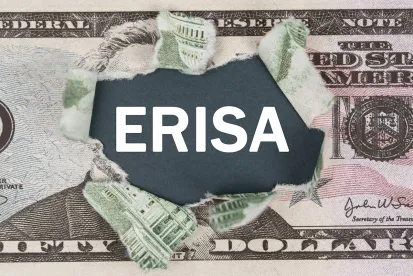On December 30, 2021, the U.S. Department of Labor (“DOL”) issued Field Assistance Bulletin No. 2021-03 (“FAB”), announcing its temporary enforcement policy for group health plan service provider disclosures under ERISA section 408(b)(2)(B).
The Consolidated Appropriations Act of 2021 (“CAA”) amended ERISA section 408(b)(2) to require “covered service providers” to disclose all direct or indirect compensation, totaling $1,000 or more, that the service provider reasonably expects to receive in connection with providing “brokerage services” or “consulting” to group health plans. These new disclosure rules, described in more detail here, became effective on December 27, 2021 (one year after the date of the CAA’s December 27, 2020 enactment). Recognizing that service providers and group health plan fiduciaries have questions about certain provisions of the new law, the DOL issued the FAB to provide a temporary enforcement policy, rather than issuing regulatory guidance.
Field Assistance Bulletin
The guiding principle of the temporary enforcement policy under the FAB is for service providers and plan fiduciaries to implement the new disclosure requirements using a good faith, reasonable interpretation of the law. When analyzing whether a service provider’s efforts comply with the requirements, the DOL will determine whether the service provider’s disclosure of information follows the transparency goals underlying the law. Moreover, the DOL will allow covered service providers to adopt “various methods” for making the required disclosures, recognizing that provider arrangements and compensation structures are unique and often complicated, and a model form would not be feasible.
Does the Prior Guidance on Retirement Plan Disclosures Have Effect?
The DOL confirmed that “covered service providers” should look to the prior guidance on retirement plan service provider disclosures. Although acknowledging that compensation arrangements under group health plans may differ from those under pension plans, because many of the requirements in section 408(b)(2)(B) and its regulation on retirement plan disclosures are identical, the DOL stated that its retirement plan guidance may be useful when analyzing the new health plan disclosure provisions.
Which Plans are “Covered Plans”?
The disclosure provisions apply to group health plans, as defined in ERISA section 733(a), which includes both insured and self-insured group health plans, as well as limited scope dental and vision plans, grandfathered health plans, and all group health plans regardless of size, even if the health plan is exempt from filing a Form 5500. The only arrangements not subject to the new disclosure requirements are qualified small employer health reimbursement arrangements, which are expressly excluded from the group health plan definition in 733(a)(1).
Who is a “Covered Service Provider”?
The CAA does not define “brokerage services” or “consulting.” Rather, the terms are referenced within the broader definition of “covered service providers” subject to disclosure under the new law. Because service providers have considerable discretion over how they describe and market their services and label their fees, the DOL clarified in the FAB that the terms “brokers” and “consultants” are not limited to service providers who are licensed as or who market themselves in these categories. Also, the DOL recognized that these categories may overlap in some instances. Further, the DOL noted that the terms are described in ERISA 408(b)(2)(B) in relationship to a list of sub-services that constitute the subject matter of the brokerage services or consulting. Thus, pending further guidance, the FAB provided that the new disclosure requirements apply to any parties who reasonably and in good faith determine their status as a covered service provider under ERISA 408(b)(2)(B).
How Should a Covered Service Provider Disclose Compensation that is Unknown When the Contract is Entered Into?
Regarding the disclosure of compensation amounts that are unknown prior to entering into a contract or arrangement—for example, contracts using disclosures of estimates or formulas—the FAB highlighted that ERISA 408(b)(2)(B) expressly acknowledges this potential challenge and grants covered service providers flexibility in how to disclose such information. Accordingly, recognizing the diverse service compensation structure in group health plans, the DOL noted that, pending further guidance, it may be reasonable in certain circumstances for covered service providers to disclose compensation using monetary ranges. However, such ranges should be reasonable and as specific as possible.
Ultimately, the FAB suggested that the covered service provider should remember the overall goal of the law—fee transparency and providing information to group health plans—when determining the adequacy of their disclosures. Furthermore, it highlighted that determining adequate disclosure depends on the facts and circumstances of the service contract or arrangement.
Is the Contract or Arrangement Subject to the New Requirements Under ERISA 408(b)(2)(B)?
The CAA provided a transitional rule to the applicability of the new disclosure requirements, stating that contracts entered into before December 27, 2021 would not be subject to these requirements. Thus, the FAB clarified that only contracts entered into, extended, or renewed on or after December 27, 2021 and subject to the requirements of ERISA 408(b)(2)(B) are required to comply with the new disclosure requirements. The FAB further explained that the date on which a contract is entered into is the date it is executed, as opposed to the effective date of the contract.
Takeaways
Group health plans should begin working in coordination with covered service providers to review the temporary enforcement policy and guidelines to ensure that they are implementing the new requirements by using the DOL’s good faith and reasonable interpretation of ERISA section 408(b)(2).





 />i
/>i

